A delicious hybrid for true gourmets - the Velikosvetskiy tomato: we get to know the species and try to grow it
The numerous variety of tomato crops often does not simplify, but complicates the choice of gardeners. Especially when it comes to choosing between a varietal culture and a hybrid. It is believed that the taste of a pure variety is higher. But the wonders of selection have reached excellent taste in hybrid varieties. One of these representatives is the Great World tomato. He will not only decorate any festive table, but will also satisfy any high-society nobleman with his taste.
Further in the article - characteristics and description of the hybrid, yield and growing rules.
The content of the article
Characteristics and description of the variety
The f1 hybrid Velikosvetsky was entered in the State Register of Breeding Achievements in 2017. The applicant indicated the company "TK Leader".
Distinctive features
A type indeterminate, height 1.5-2 m. With such a growth, the plants must be tied up and pinned to prevent thickening of the plantings.
The ripening period is early, from the moment of sowing the seeds to full maturation, 105-110 days pass.
The yield is high, 5 kg of fruits are harvested from 1 seedling, provided that 3-4 plants are planted per 1 sq. m.
The genes of the hybrid have an increased resistance to major diseases, such as late blight, tobacco mosaic virus and fusarium. Also, the culture is immune to bacterial infections.
The hybrid is suitable for open field and greenhouse breeding.
Fruit characteristics
Each cluster forms 5-8 fruits, the average weight of which is 130-140 g. The shape is cuboid, slightly elongated, the color is bright red. The taste is pronounced, sweet with a slightly perceptible sourness. The pulp is dense, juicy, seed chambers 3, few seeds.
The peel is firm, not prone to cracking. For this reason, the fruits are used for the preparation of preserves and marinades, as they perfectly withstand heat treatment. The variety belongs to salad varieties, so ripe vegetables are ideal for preparing various fresh dishes.
The photo shows a hybrid Velikosvetsky.

How to grow seedlings
To grow full-fledged seedlings, seeds are sown 2 months before planting in the ground. But before sowing, the seed is carefully prepared.
Seed preparation
Initial preparation consists of rejecting the seed, checking for voids and disinfecting. Rejection is carried out by careful examination for visible defects. Seeds light in color, without distortions and external damage left for germination.
Check for emptiness by immersion in saline solution for 10 minutes. Saline is prepared from 1 teaspoon of salt dissolved in a glass of water. Those grains that have floated to the surface are disposed of, they are not suitable for sowing. Seed material is disinfected in a solution of pink potassium permanganate for 20 minutes. After disinfection, the seeds are washed with running water and dried thoroughly.
To increase germination, the grains are soaked in a growth stimulator for 10 hours. It is not necessary to use specialized drugs as a stimulant. The same function is performed by potato juice and aloe juice.
Reference! Aloe juice additionally disinfects the seed material, strengthening the immune system.
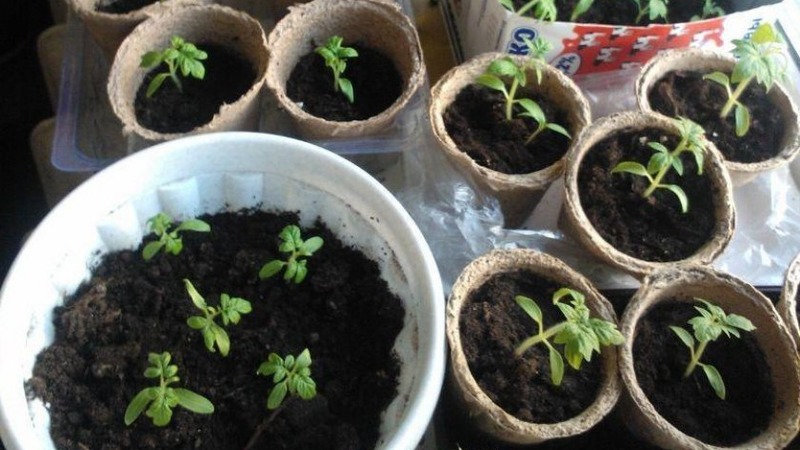
Capacity and soil
A common wooden box or individual containers, for example, peat or plastic cups, are used as planting containers. They are prepared in advance by processing in a solution of potassium permanganate. Disinfection of the planting containers is necessary, especially if it was used for planting last year. At the bottom of the containers, drainage holes are made to drain excess moisture and put some small pebbles or sawdust.
The soil is prepared from turf, peat and humus in equal amounts. After thoroughly mixing all the components, a little wood ash is added to the resulting mixture. Stir again and spill the prepared soil with a hot solution of potassium permanganate to destroy the pathogenic flora.
Reference! Wood ash saturates the soil with nutrients necessary for the full development of seedlings.
The soil is laid out in planting containers, filling them in half. During the subsequent growth of the seedlings, the remaining soil is added to the containers, thus providing the sprouts with additional nutrition.
Sowing
The seeds are buried by 1 cm. If sown close to the surface, the grains will germinate together with the shell, which will slow down their further growth. After sowing, the soil is watered with a spray bottle with warm, settled water and the containers are covered with a film to create a greenhouse effect. Until the seeds germinate, the containers are left in a warm room at a temperature of 25 ° C.
Reference! When creating a greenhouse effect, the seed germinates faster.
Seedling care
The first shoots appear in a week. The film is removed, and the containers are rearranged in a well-lit place on the windowsill. The first week, it is especially important to observe the length of daylight hours and the temperature regime. Sufficient light can be obtained with 13 hours of daylight hours. Fitolamps are installed if necessary. The temperature is reduced to 15 ° C, and after 6 days it is increased to 24 ° C. This is how the first hardening of the seedlings occurs.
Watered warm settled water using a shallow watering can along the edge of the containers. Water lightly as the top layer of the soil dries up.
When 2 true leaves appear, the seedlings are dived, seated in separate containers. When picking, the main root is shortened by one third for further growth of the root system.
During the seedling period, seedlings are fed twice. First feeding make 10 days after picking. The second time is fed 2 weeks after the first. As top dressing, liquid fertilizers are used for tomato seedlings.
Seedlings are hardened 2 weeks before transplanting. To do this, they are taken out into the open air for 40 minutes. Every day, the time spent on the street is gradually increased to 10 hours.
Important! When hardening plants, the outdoor temperature should be at least 12 ° C.
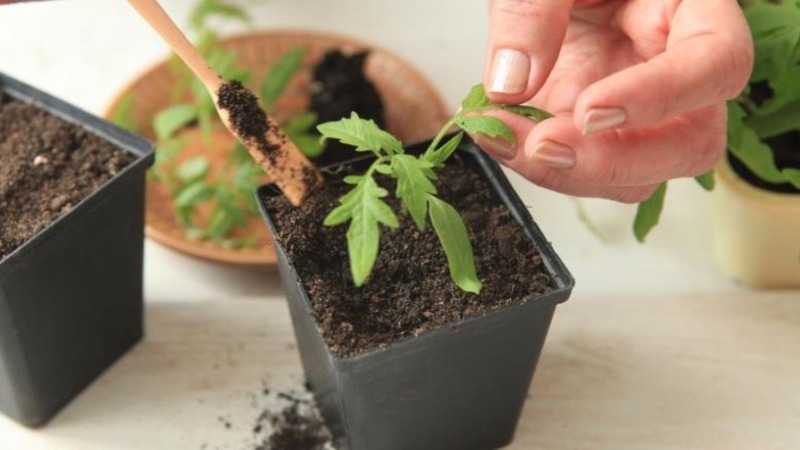
How to grow tomatoes
After 2 months, you can plant seedlings in the ground. The beds for tomatoes are prepared in advance, choosing a place that is sunny and protected from drafts.
Landing
They are transplanted into holes 15-20 cm deep in the evening or early morning. They are transplanted with a clod of earth, deepening the seedlings to the first leaves. The earth is compacted and watered with warm, settled water. After watering, the soil is loosened and the seedlings are left to get used to the new place for 10 days.
Landing scheme: 40 cm - distance between seedlings, 60 cm - distance between rows. For 1 sq. m place 3 - 4 plants.
Further care of the tomato Great world
Proper watering is the key to healthy plant growth. Tomatoes are rarely watered, but abundantly, in normal weather, once a week. On dry days, the amount of watering is increased up to 2-3 times. Watered with settled water, strictly at the root, without falling on the leaves. To retain moisture in their beds mulch peat or straw.
After watering, the soil is loosened, thereby improving the air permeability of the soil. Along with watering, weeding of the beds is also important. In the weed grass there is a rapid spread of fungal diseases and the reproduction of pests.
The minimum amount of dressings per season is at least 3. But to achieve the best amount of fruiting, the plants are fed 1 time in 3 weeks.
A full complex of mineral fertilizers with a predominant content of phosphorus and potassium is used as top dressing. Feeding with organic matter, for example, bird droppings in a ratio of 1:15, is also considered a good option.
Reference! For tall plants, nitrogen-containing fertilizing is used only at the initial stage, since nitrogen promotes enhanced growth.
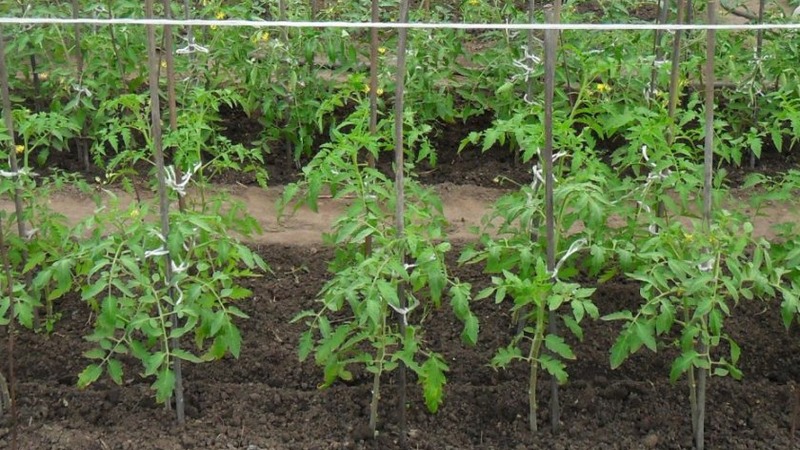
Features in care and possible difficulties
When transplanting, a vertical wooden or metal support is installed next to each bush. The height of the stem requires a binding garter, otherwise it will not support the weight of numerous fruits. In addition, the plant can suffer from rainfall and gusts of wind. Also, instead of a vertical support, a horizontally stretched wire can be used. This fixation option is considered the best, since neither the stem nor the branches are injured.
Reference! When fixed to a horizontal support, the fruits are formed slightly larger.
The pinching procedure is needed to increase the quantitative indicator of fruiting. In addition, when removing numerous excess shoots, the possibility of plant thickening is excluded.
The bush is led into 1, 2 or 3 stems. When formed in 1 stem, the highest yield is observed.
Diseases and pests
As the prevention of diseases, folk methods are often used, since they are cheaper and safer than chemicals.
The bushes are sprayed with a weak solution of potassium permanganate, thereby preventing the occurrence of fungal and bacterial infections. Potassium permanganate can be replaced with ash, which has the same purpose.
When a fungus is affected, use the drugs "Quadris" or "Fitosporin". These substances are classified as contact fungicides.
In case of an invasion of pests such as aphids, slugs, whiteflies, use the insecticide "Proteus" or spray the plants with decoctions of fragrant herbs.
Reference! "Proteus" actively affects pests at all stages of their development, from eggs and larvae to adults.
Daily inspection of plants will protect them from the invasion of parasitic insects.
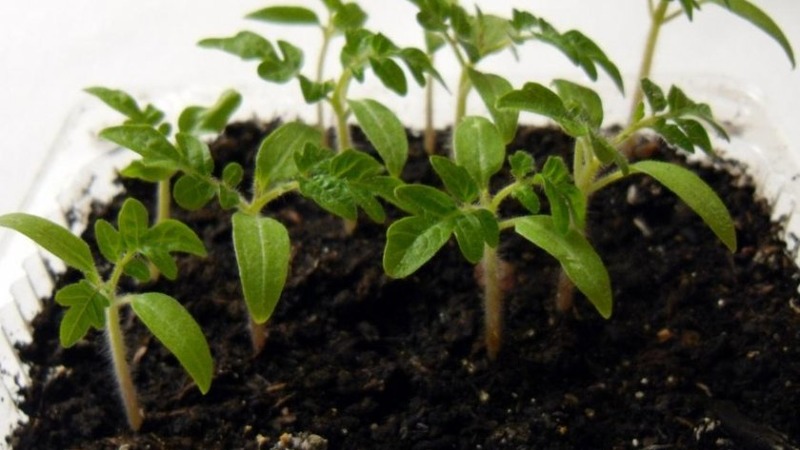
The nuances of growing in open ground and in a greenhouse
Greenhouse plants grow to a height of 2 m, so pinching the crown is necessary to limit growth. When marking a growth point, nutrients are spent on the formation of fruits, and not on the growth of unnecessary branches.
In the greenhouse, last year's topsoil is changed to a new one. This is due to the fact that past plantings are depleting the soil. In addition, a large number of microorganisms winter successfully in the upper layer, which cause considerable harm to plantings in the spring. If there is no possibility for replacement, then the soil is carefully supplied with mineral fertilizers and disinfected with a dark solution of manganese.
Protected structures must be ventilated every day. Otherwise, the increased temperature and humidity will provoke the development of fungal infections. In addition, the influx of fresh air destroys the habitat of many greenhouse pests.
Harvesting and application of the crop
The fruits are harvested based on their shelf life. If you plan to store tomatoes for a long time, then they are picked green. Ripe vegetables are stored for no more than 2 weeks.
The use of vegetables is universal. They are ideal for preparing a variety of fresh dishes, for example: hot or vegetable dishes, various snacks, summer salads, sandwiches. Tomatoes are good in whole-fruit canning, pickles and pickles, and they are also allowed to be processed into tomato products, getting delicious juices, ketchups and sauces.
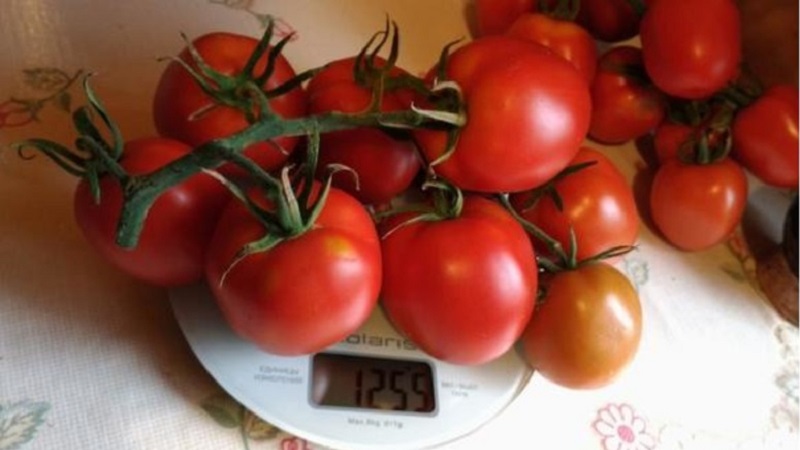
Advantages and disadvantages of the variety
The variety has many positive properties:
- high productivity;
- easy care;
- the possibility of breeding in open and protected ground;
- good disease resistance;
- early ripening;
- great fruit taste;
- unusual cuboid shape;
- versatility in cooking.
Negative characteristics include the need for a garter, regular pinching and the formation of seedlings, which can be difficult for novice gardeners.
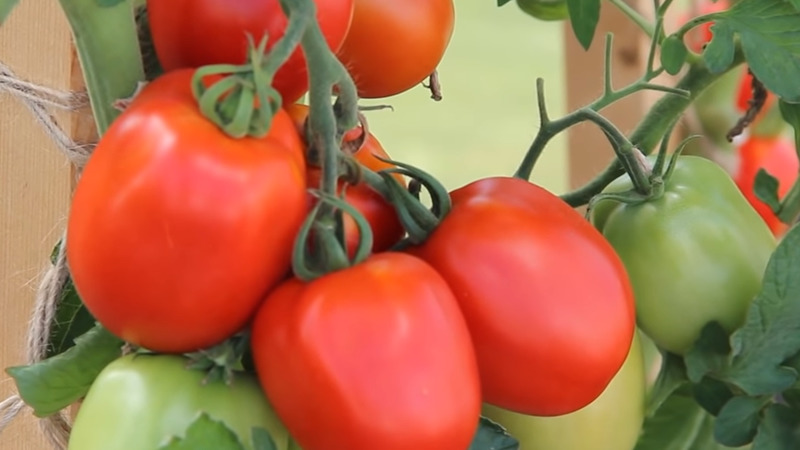
Farmers reviews
The photographs clearly show four smoothed edges at the shape of the fruit. Numerous reviews indicate that tomatoes are really not round, and this feature gives a kind of charm.
Valentina, Oryol region: “Summer this year has come with a delay, but the hybrid has taken root very well. The first fruits appeared at the end of July. I liked the dense brushes of tomato with tomatoes of the same size as for the selection. In each hand, 6-8 ovaries were formed. The Great World tomato came out wonderfully well! Original shape and excellent taste. "
Tatiana, Bryansk: “The seeds of this crop are distinguished by 100% germination rate. She grew the hybrid in different ways: she formed one, two shoots or more. On the seedling, where I left one stem, the most fruits ripened. Tomatoes with an unusual shape and great taste. I liked that the brushes have time to ripen completely and the vegetables do not crack. "
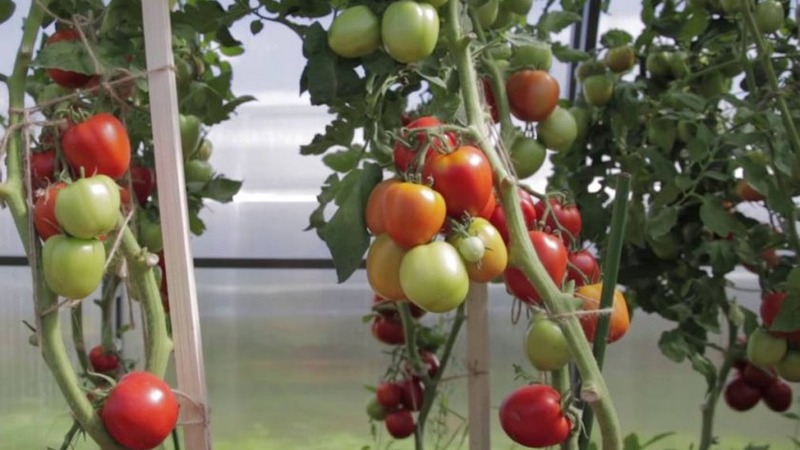
Conclusion
The Velikosvetskiy tomato is distinguished not only by the unique form of ripe vegetables, but also by its unpretentious care, resistance to diseases and a high rate of fruiting. The cultivation of such a culture will not cause any trouble and will delight you with an excellent harvest. The hybrid is suitable for cooking summer dishes and winter preparations.